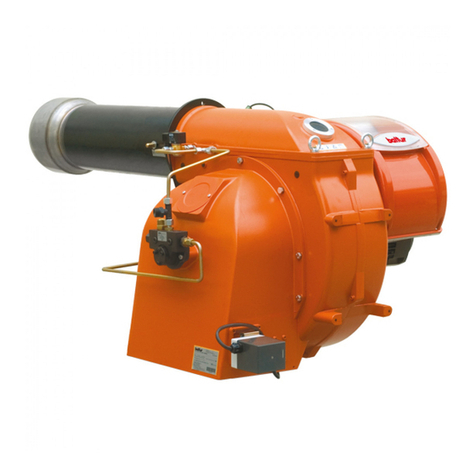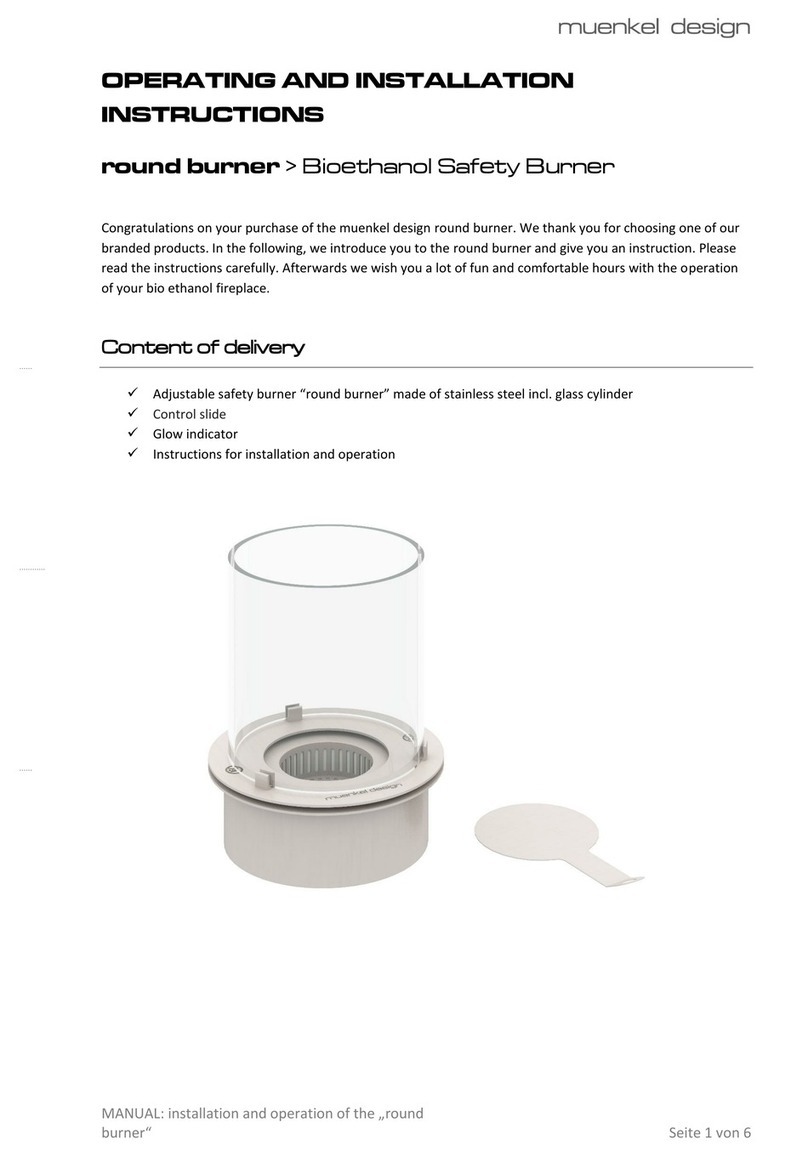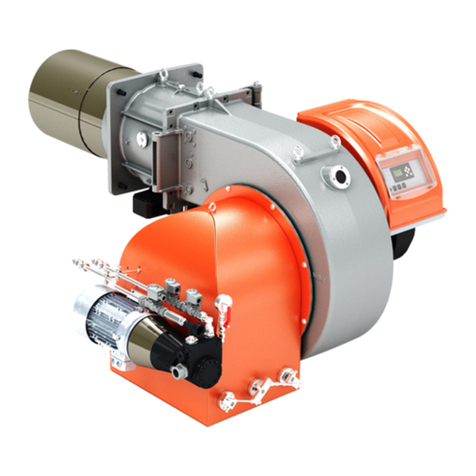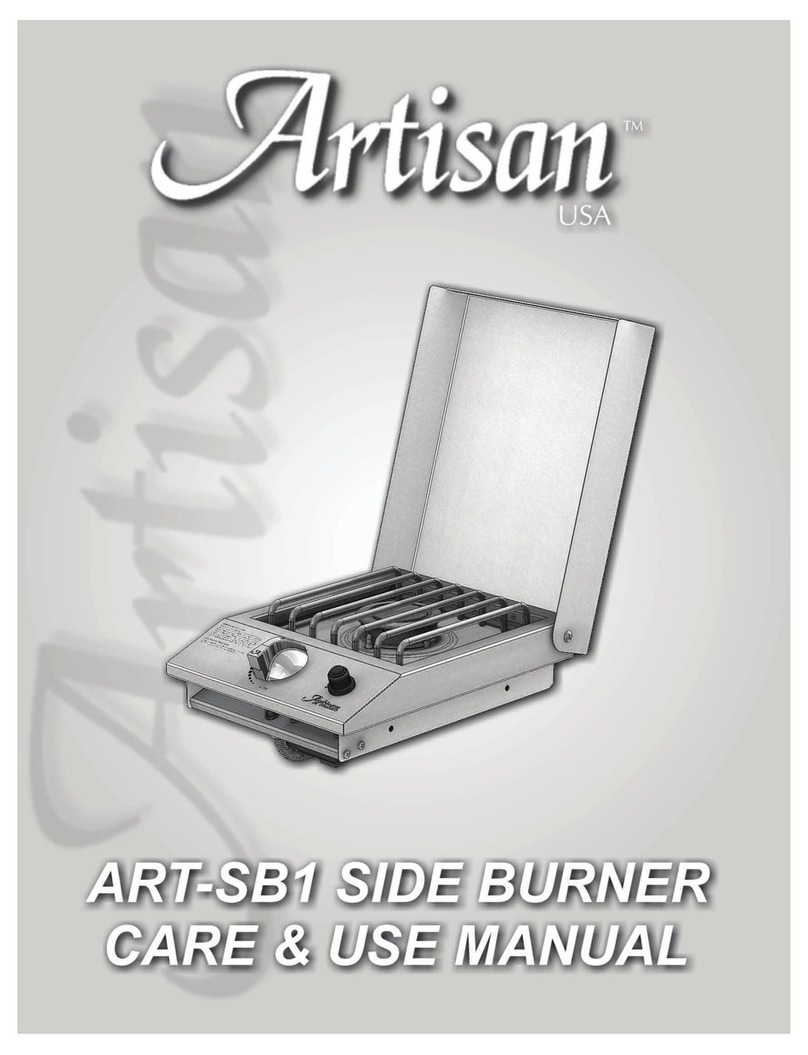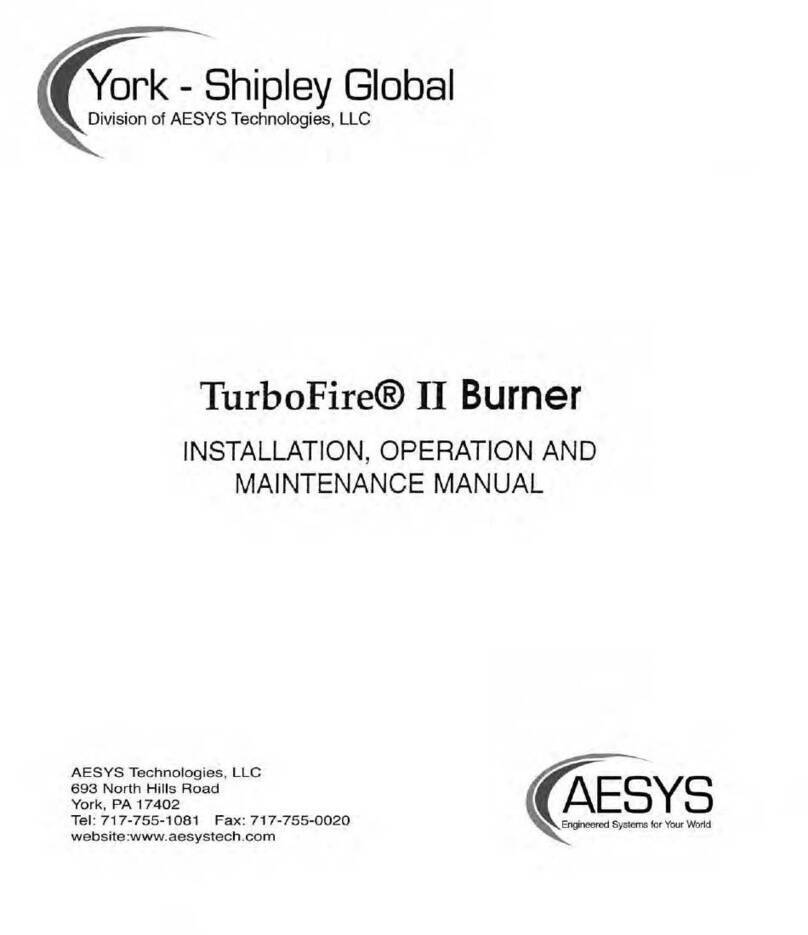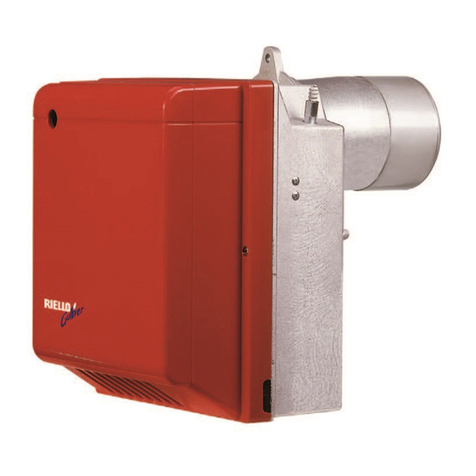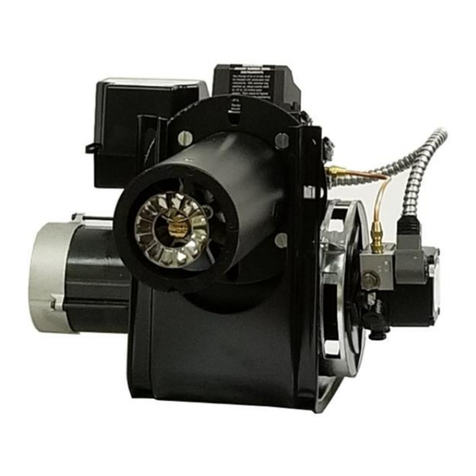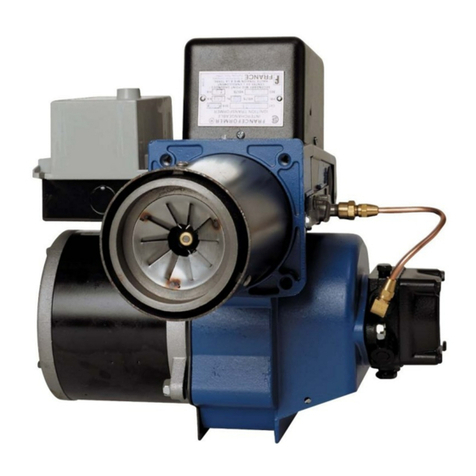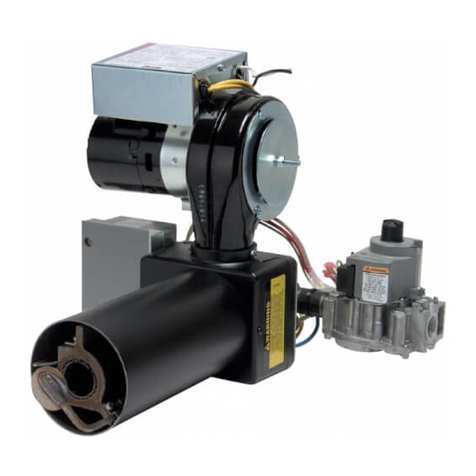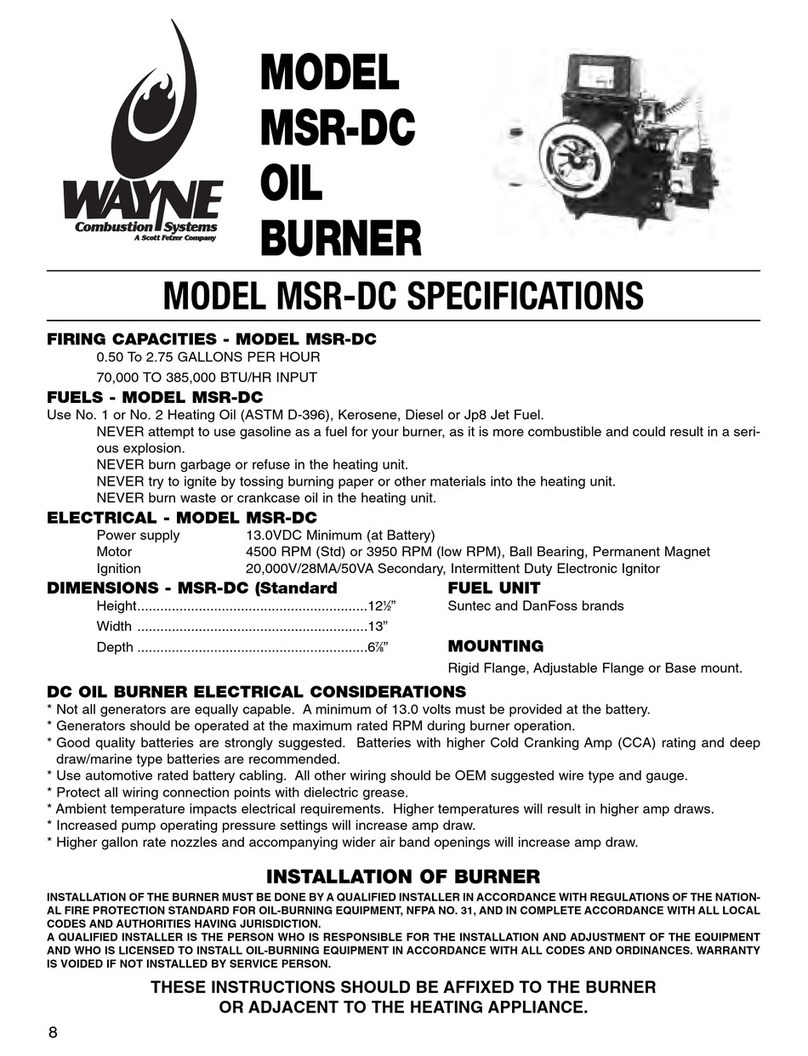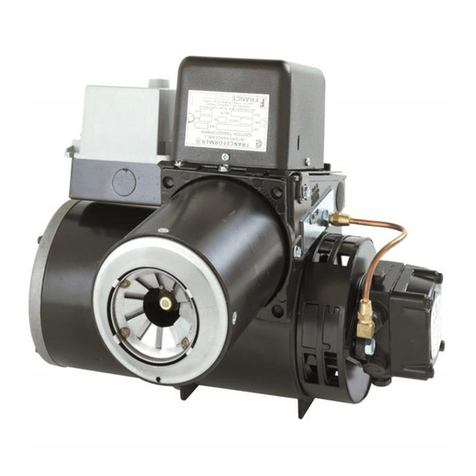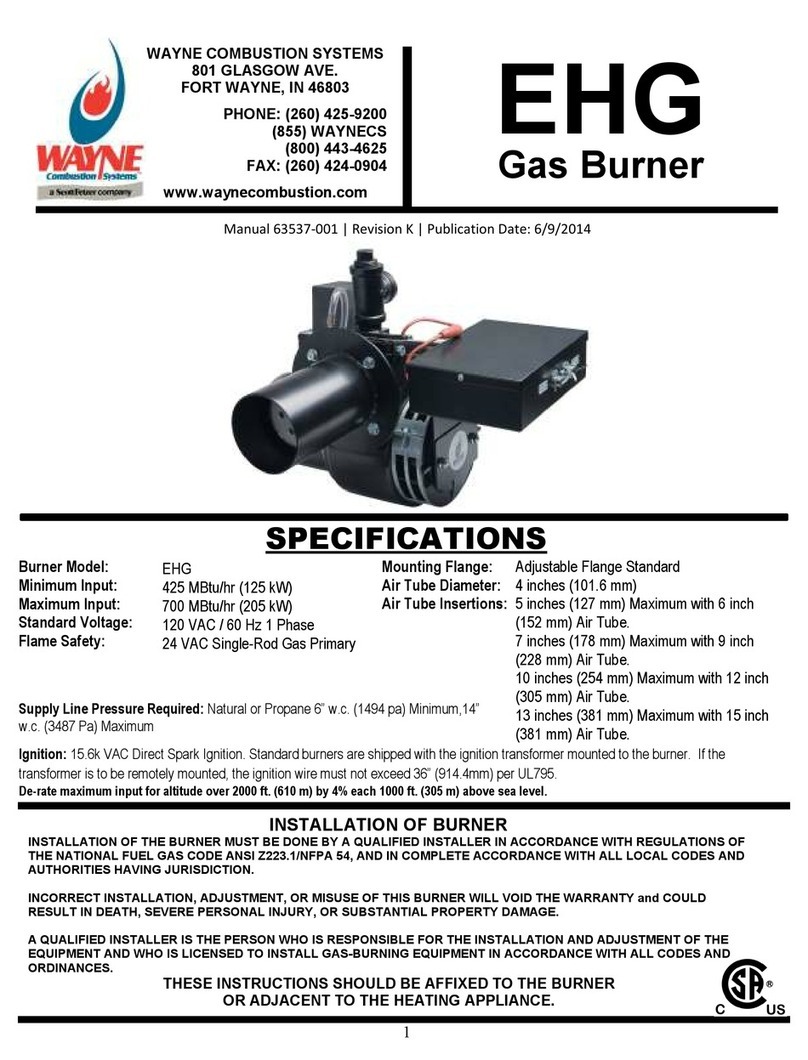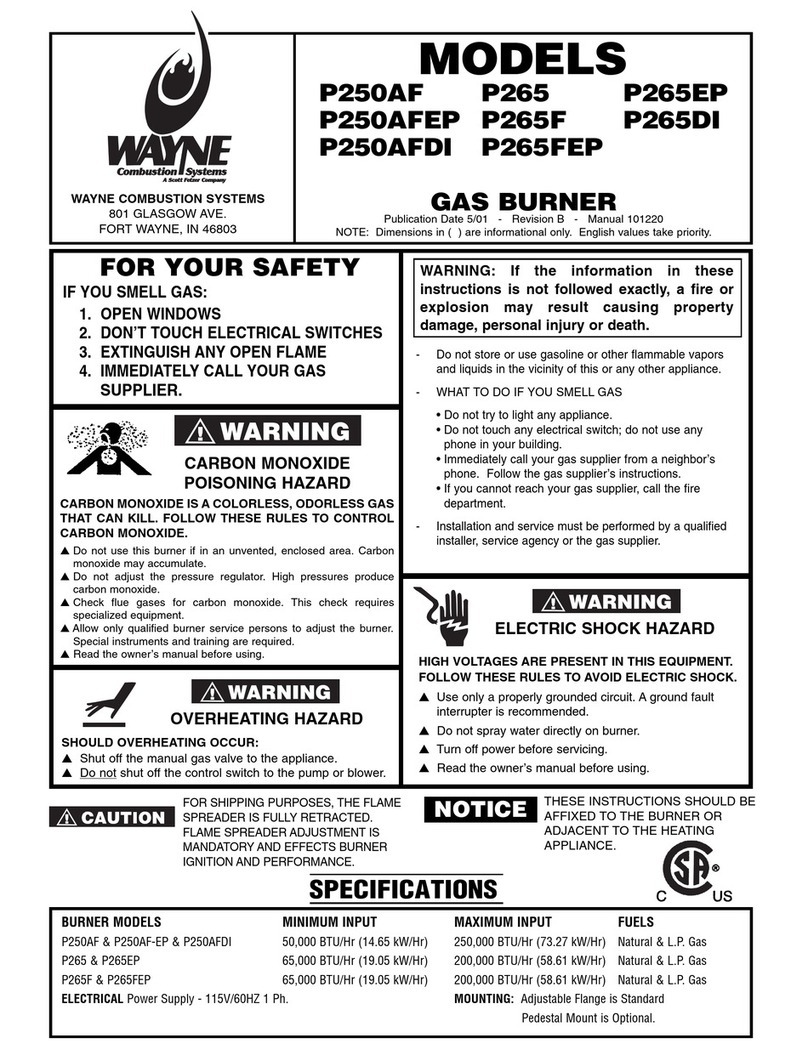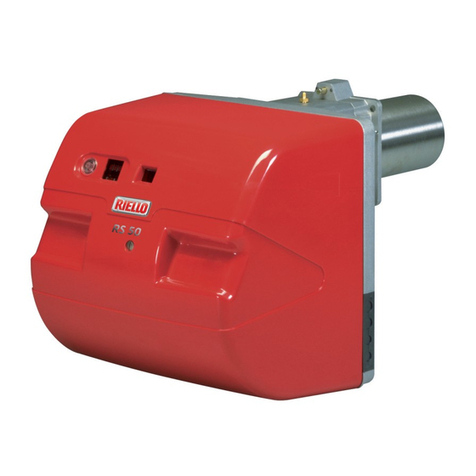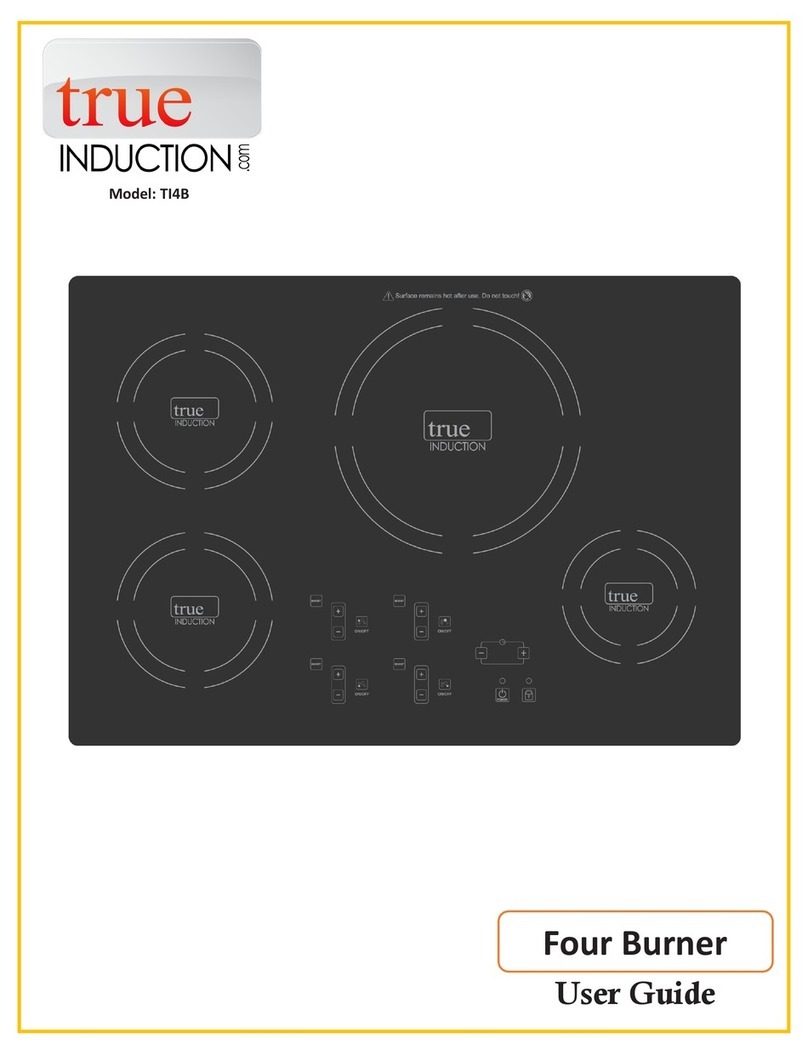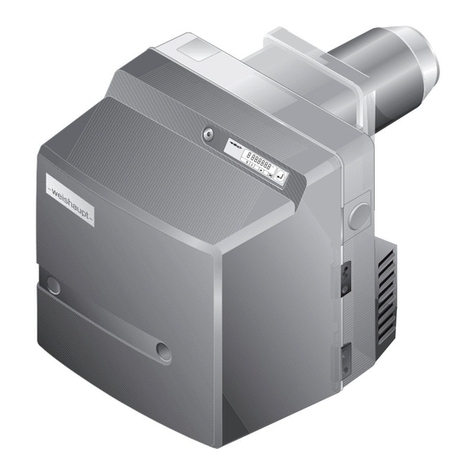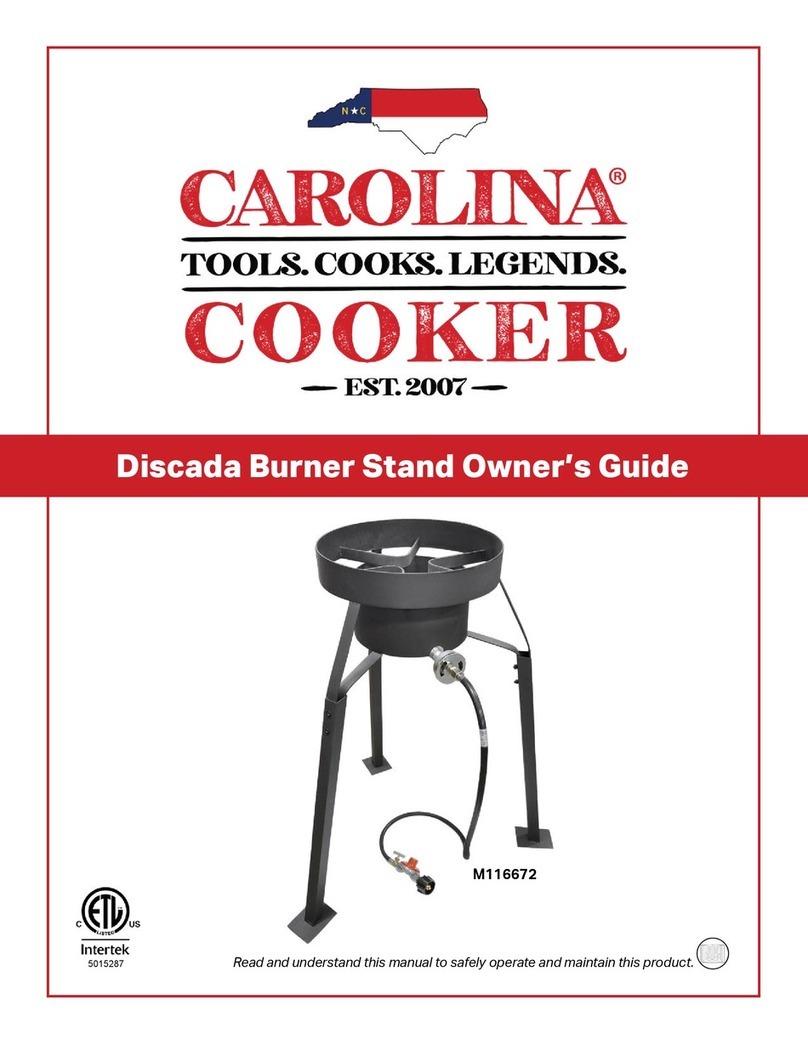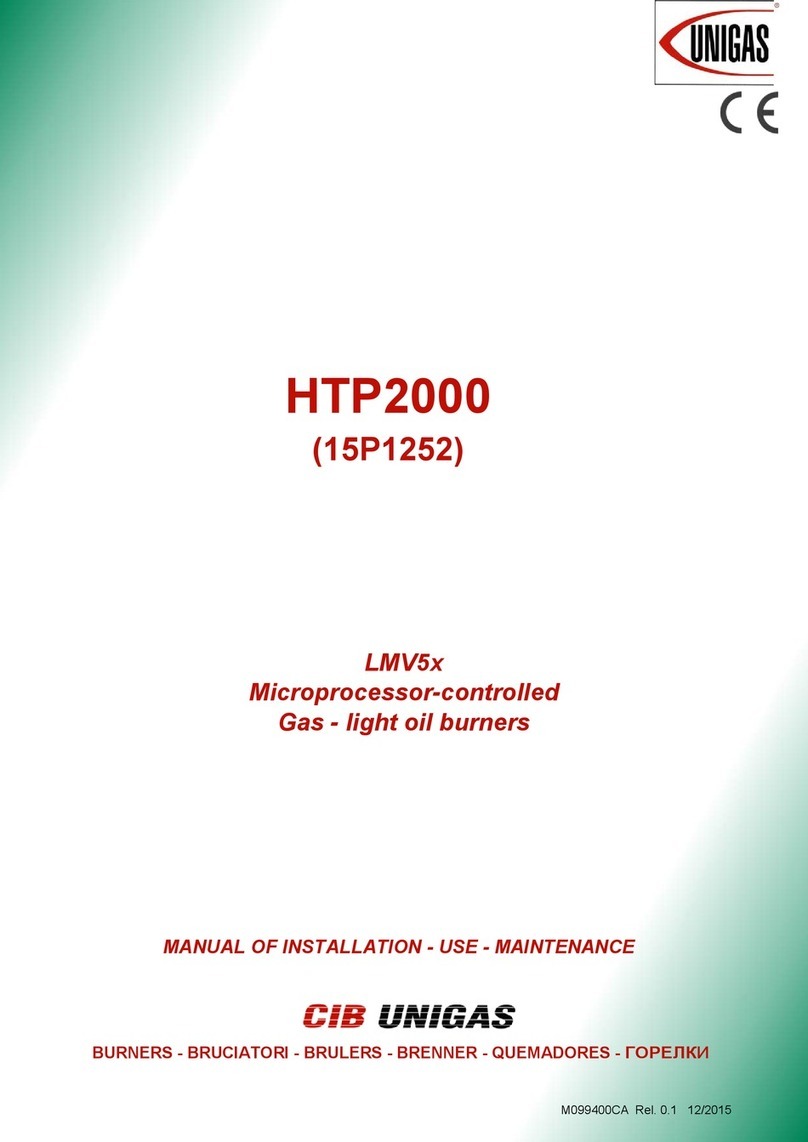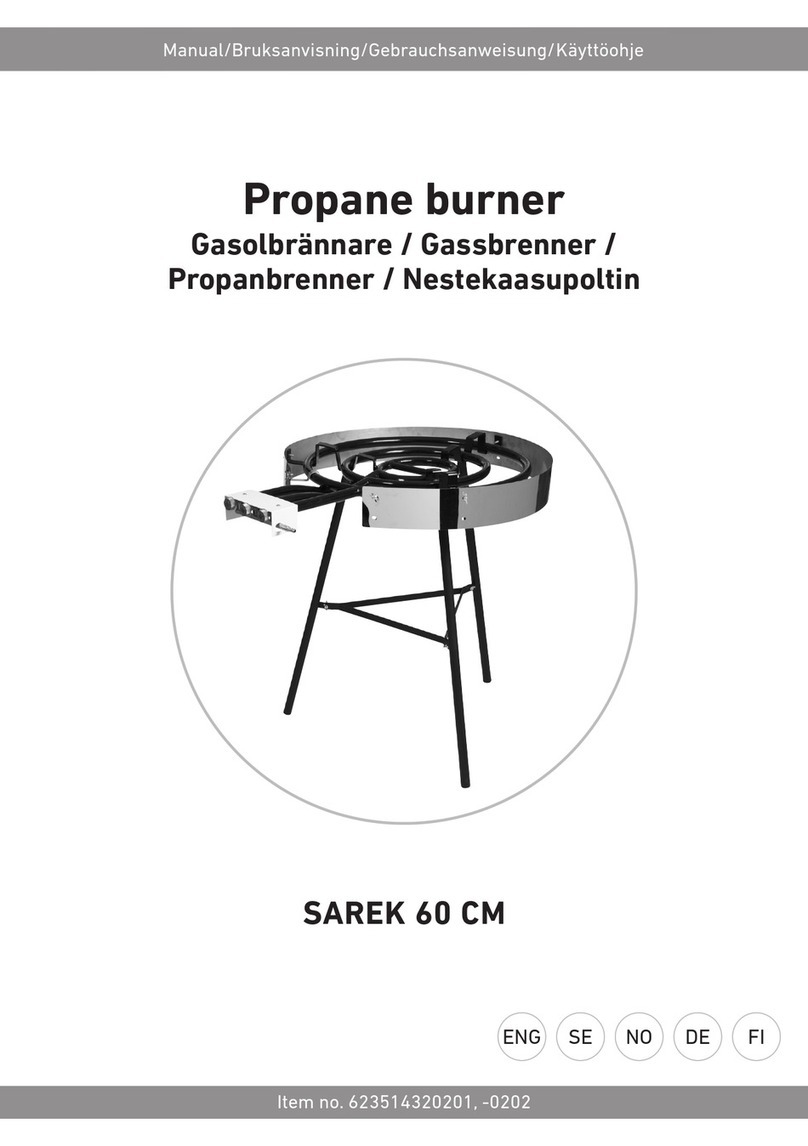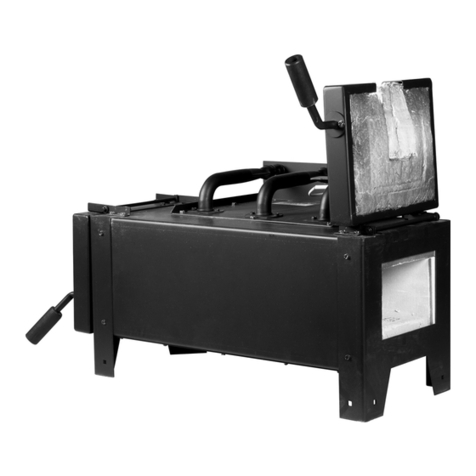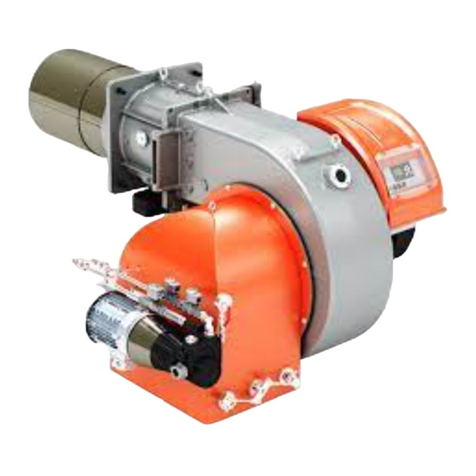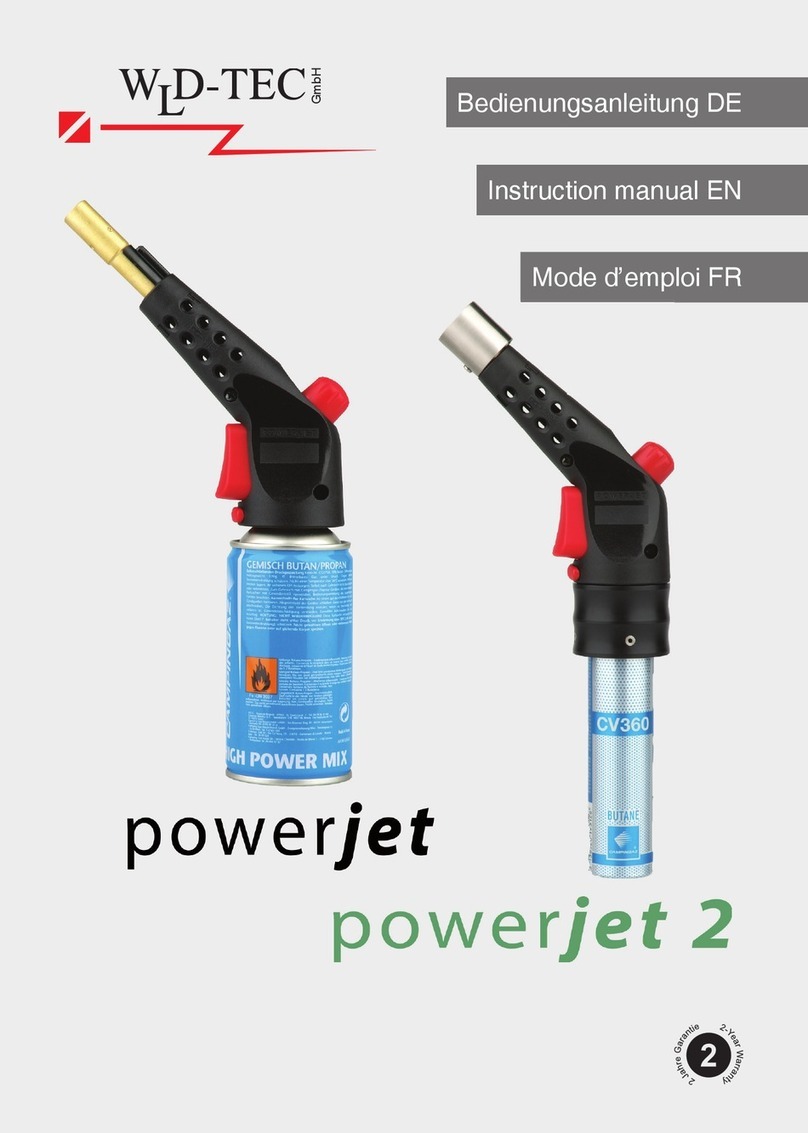SECTION
I
INSTALLATION
A. GENERAL
Wayne
Stealth
conversionburnersarepre-
assembled
power
gas
burnersusing
INTERMITTENT
PILOTlGNlTlON.The
burner
iscapable
ofnear
perfect
combustion
duetocomplete
mixing
of
the
air
and
gas
before
enteringthecombustionzone.
TheWayneStealth
Burner
isdesignedfor
negativedraftconversion
installations.ltis
alsocapableoffiringinsorne
forced
draft
applications.
However,laboratory
testing
is
requiredtodo so,
andshouldneverbetried
in
a home.
followlocalinstallation
codesor theAmerican
National
StandardforTheInstallation
of
Domestic
GasConversionBurners,ANSI
221.8-1991
andtheNationalFlue
GasCode,
ANSI
2223.1,
ofcurrentstandard
year.
NOTICE:
ANSI
or local
installation
code
compliance
isthesoleresponsibilityof
thequalilied
installer.
DANGER:
Thisburneriscapable
of extremely
high
efficiency
operation.
However,
if improper-
ly installed
or notset
to specifications,
a
fire
orexplosion
couldresultcausing
property
damage,
personal
injuryor death.
goodworkmanship
is requiredfor safe
andsatisfied
customers.
B. VENTILATION
Make
sure
aircirculation
provides
enoughair
for
proper
combustionand
any
required
draft
hood
dilution.
In
openroomswithout
storm
windows
ortight
doors,
infiltration
air
issufficient
toreplace
air
drawnupthe
flue,
so
additionalmeans
are
seldom
necessary.
lntightlyclosedroomswithoutventilation
openings
to
theoutdoorsorotherrooms,
combustionairmust
besupplied
through
two
openings,
oneneartheceiling,theothernear
the
floor.
Eachshouldhave
one
squareinch
opening
or
more
per
1,0008TU
hourly
input.
lnahouseof
tight
construction,
with
an
exhaustingfan
orfireplace,outsideairshould
be
suppliedfor
combustion.Use
an
air
intake
terminating
outside
inadown-turned
fitting
to
prevent
obstructionfromrain
orsnow.
lt
should
include
a 1/4
inch
mesh
or
larger
for
protection.
C. HEATING APPLIANCE
INSPECTION
Oilfired
appliances
in
good
condition
require
little
preparation
for
conversion.Cleanthe
heatexchangerinterior,
combustionchamber
andflue
connection;
remove
tar,scale,dirt
or
soot.Cementall
joints
arouhdtheappliance
baseandaccess
openings
toprevent
air
and/orcombustion
chamber
leakage.
EXISTING CONTROLS
The
existing
controlssystem
may
notbe
com-
patible
withthis
burner.Check
todetermine
their
compatibility
withthe
gas
controlcircuit.
2
SECTION I
INSTALLATION
A.GENERAL
Wayne Stealth conversion burners are pre-
assembled power gas burners using
II\JTERMITIEI\lT PILOT IGNITION. The
burner is capable of near perfect combustion
due to complete mixing of the air and gas
before entering the combustion zone.
The Wayne Stealth Burner is designed for
negative draft conversion installations.
It
is
also capable of firing in some forced draft
applications. However, laboratory testing is
required to do so, and should never
be
tried
in
ahome.
follow local installation codes or the American
National Standard for The Installation of
Domestic Gas Conversion Burners, ANSI
Z21.8-1991 and the National Flue Gas Code,
ANSI Z223.1, of current standard year.
NOTICE:
ANSI or local installation code
compliance is the sole responsibility of
the qualified installer.
DANGER:
This burner
is
capable of extremely high
efficiency operation. However, if improper-
ly
installed or not set to specifications, a
fire or explosion could result causing
property damage, personal injury or death.
good workmanship
is
required for safe
and satisfied customers.
B.
VENTILATION
Make sure air circulation provides enough air
2
for proper combustion and any required draft
hood dilution.
In
open rooms without storm windows or tight
doors, infiltration air is sufficient to replace air
drawn up the flue, so additional means are
seldom necessary.
In
tightly closed rooms without ventilation
openings to the outdoors or other rooms,
combustion air must be supplied through two
openings, one near the ceiling, the other near
the floor. Each should have one square inch
opening or more per
1,OOOBTU
hourly input.
In
ahouse of tight construction, with an
exhausting fan or fireplace, outside air should
be
supplied for combustion. Use an air intake
terminating outside
in
adown-turned fitting to
prevent obstruction from rain
or
snow.
It
should include a1/4 inch mesh
or
larger for
protection.
C.
HEATING
APPLIANCE
INSPECTION
Oil fired appliances in good condition require
little preparation for conversion. Clean the
heat exchanger interior, combustion chamber
and flue connection; remove tar, scale, dirt
or
soot. Cement all joints around the appliance
base and access openings to prevent air
and/or combustion chamber leakage.
EXISTING
CONTROLS
The existing controls system may not be com-
patible with this burner. Check to determine
th~ir
compatibility with the gas control circuit.
